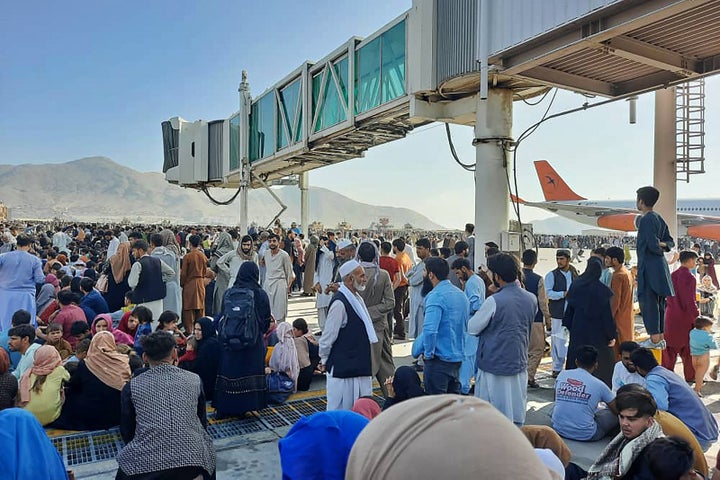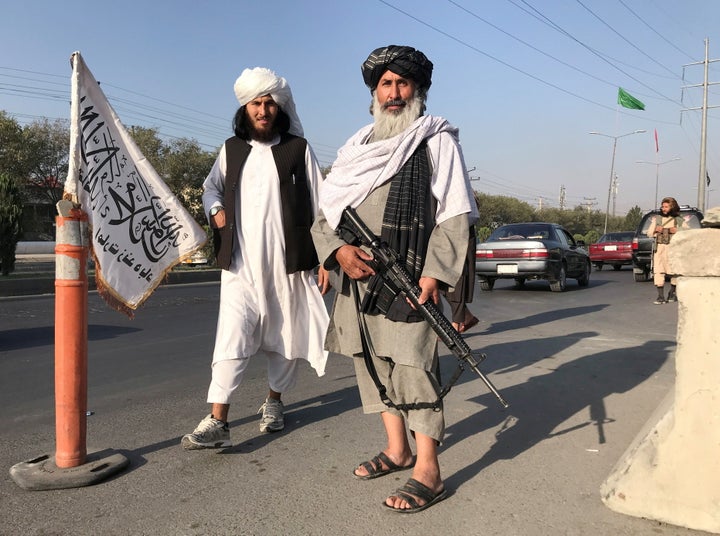Kabul, Afghanistan. The US military struggled to manage a chaotic evacuation from Afghanistan on Monday as the Taliban patrolled the capital and tried to project calm after toppling the Western-backed government.
The Taliban swept into Kabul on Sunday after President Ashraf Ghani fled the country, bringing a stunning end to a two-decade campaign in which the US and its allies had tried to transform Afghanistan. The country’s Western-trained security forces collapsed in a matter of days, even before the withdrawal of the last US troops.
Thousands of Afghans fearing a return to Taliban rule are trying to flee the country through Kabul’s international airport. Videos circulating on social media showed hundreds of people racing across the tarmac as US soldiers fired warning shots in the air. Another showed a crowd pushing and shoving its way up a staircase, trying to board a plane, with some people hanging off the railings.

Massouma Tajik, a 22-year-old data analyst, described scenes of panic at the airport, where she was among hundreds of Afghans hoping to board an evacuation flight.
After waiting six hours, she heard shots from outside, where a crowd of men and women were trying to climb aboard a plane. She said US troops sprayed gas and fired into the air to disperse them. Gunfire could be heard in the voice notes she sent to The Associated Press.

The US Embassy has been evacuated and the American flag lowered, with diplomats relocating to the airport to aid with the evacuation. Other Western countries have also closed their missions and are flying out staff and civilians.
By morning, Afghanistan’s Civil Aviation Authority issued an advisory saying the “civilian side” of the airport had been “closed until further notice” and that the military controlled the airspace.
Afghanistan’s airspace is often used by long-haul carriers moving between the Far East and the West. Early Monday morning, flight-tracking data showed no immediate commercial flights over the country.
In the capital itself a tense calm set in, with most people hiding in their homes. There were scattered reports of looting and armed men knocking on doors and gates. The Taliban freed thousands of prisoners as they swept across the country and the police melted away.

The Taliban deployed fighters at major intersections and sought to project calm, circulating videos showing quiet city streets.
“There were a few Taliban fighters on each and every road and intersection in the city,” Shah Mohammad, a 55-year-old gardener, said after coming to work in the diplomatic quarter. He said there was less traffic than usual and fewer people out on the streets.
Suhail Shaheen, a Taliban spokesman, tweeted that fighters had been instructed not to enter any home without permission and to protect “life, property and honour.” The Taliban have also said they will stay out of the upscale diplomatic quarter housing the US Embassy complex “so as not to create any confusion or problems.” The neighbourhood also includes the posh villas of US-allied former warlords who have fled the country or gone into hiding.
Who are the Taliban?

The Taliban ruled Afghanistan from 1996 to 2001 with a harsh form of Islamic law. Women were largely confined to their homes and suspected criminals faced amputation or public execution. The Taliban have sought to project greater moderation in recent years, but many Afghans remain skeptical and fear a rollback of individual rights.
The Taliban had also harboured Osama bin Laden and al-Qaida in the years before they carried out the September 11, 2001 attacks. That sparked a US-led invasion that rapidly scattered al-Qaida and drove the Taliban from power.
But the US lost focus during the Iraq war and the Taliban eventually regrouped. The militants captured much of the Afghan countryside in recent years and then swept into cities as US forces prepared to withdraw ahead of an August 31 deadline.
When the Taliban last seized Kabul in 1996 it had been heavily damaged in the civil war that broke out among rival warlords after the Soviet withdrawal seven years earlier. The city was then home to around a million people, most travelling on dusty roads by bicycle or ageing taxi.
Today Kabul is a built-up city home to 5 million people where luxury vehicles and SUVs struggle to push through endemic traffic jams. Many of the younger Taliban fighters hail from rural areas without electricity or running water, and are getting their first glimpse of a modern city they had only previously heard stories about.
Faiez reported from Istanbul, Krauss from Jerusalem and Gannon from Guelph, Canada. Associated Press writers Jon Gambrell in Dubai, United Arab Emirates, and Samya Kullab in Baghdad contributed.
